Mid century bathroom vanities embody the essence of retro charm, blending organic shapes, geometric patterns, and bold colors to create a distinctive and captivating style. These iconic pieces transcend time, seamlessly integrating into modern bathroom designs, offering both functionality and a touch of nostalgia.
From the defining design elements to the practical considerations, this comprehensive guide delves into the world of mid century bathroom vanities, providing insights into their materials, storage solutions, and renovation considerations.
Design Trends: Mid Century Bathroom Vanities
Mid-century bathroom vanities are characterized by their clean lines, organic shapes, and bold colors. They often feature geometric patterns and are made from materials such as wood, metal, and glass.
Some of the most iconic mid-century vanity designs include the Eames vanity by Charles and Ray Eames, the Tulip vanity by Eero Saarinen, and the Barcelona vanity by Ludwig Mies van der Rohe.
Organic Shapes
Organic shapes are a defining feature of mid-century bathroom vanities. These shapes are inspired by nature and can be found in the curves of the vanity’s legs, the shape of the sink, and the overall form of the vanity.
Geometric Patterns
Geometric patterns are another common feature of mid-century bathroom vanities. These patterns can be found in the tiles on the vanity’s backsplash, the wallpaper on the vanity’s walls, and the fabric on the vanity’s curtains.
Bold Colors
Mid-century bathroom vanities often feature bold colors. These colors can be found in the vanity’s paint, the sink’s glaze, and the hardware on the vanity.
Materials and Finishes
Mid-century bathroom vanities were crafted from a variety of materials, each with its own unique characteristics and durability. Let’s explore the common materials and finishes used in these iconic designs.
Wood, Mid century bathroom vanities
Wood was a popular choice for mid-century vanities, offering warmth and natural beauty. Teak, walnut, and mahogany were commonly used, prized for their durability and rich grain patterns.
Laminate
Laminate, a synthetic material made from layers of paper and resin, was also widely used. It was available in a range of colors and patterns, making it a versatile option for creating a custom look.
Metal
Metal, particularly chrome and brass, was often used for vanity legs and accents. These metals added a touch of sophistication and durability to the design.
Finishes
Mid-century vanities featured a variety of finishes, from glossy to matte to textured. Glossy finishes reflected light, creating a glamorous look. Matte finishes, on the other hand, provided a more subtle and understated appearance. Textured finishes, such as brushed metal or embossed laminate, added visual interest and depth.
Storage Solutions
Mid-century vanities offer a variety of storage options to meet the needs of any bathroom. From drawers to cabinets to open shelving, there’s a solution for every storage need.
Drawers are a great option for storing smaller items like toiletries, makeup, and hair accessories. They’re easy to access and can be customized to fit specific needs. Cabinets are a good choice for storing larger items like towels, linens, and cleaning supplies.
They’re also a good option for hiding away clutter.
Open Shelving
Open shelving is a great way to add a touch of style to your bathroom while also providing additional storage space. Open shelves can be used to store anything from towels to plants to decorative items. They’re a great way to show off your personality and make your bathroom feel more like home.
Vanity Tops
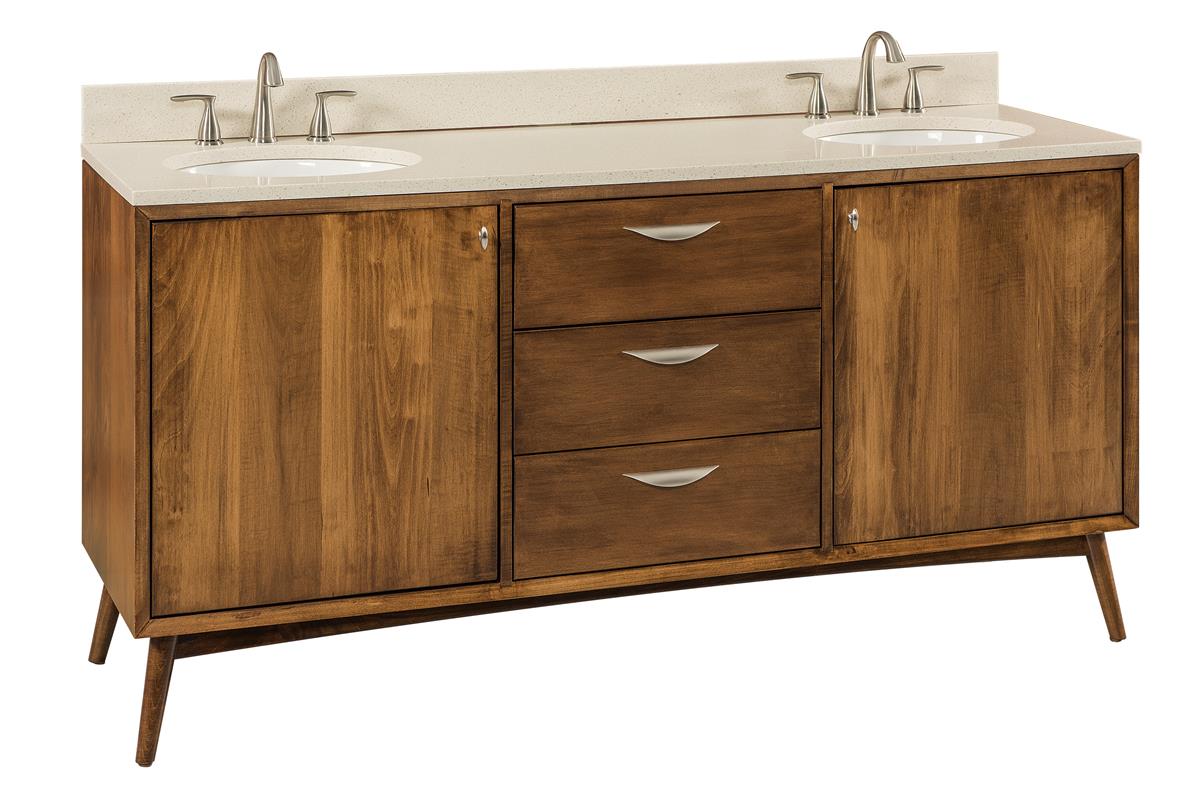
The vanity top is a crucial element that sets the tone for the overall bathroom design. Mid-century modern vanities offer a wide array of top materials, each with its unique characteristics and advantages.
When selecting a vanity top, consider the style, durability, and maintenance requirements that align with your bathroom’s aesthetic and usage patterns.
Ceramic
Ceramic vanity tops are a popular choice due to their durability, affordability, and versatility. They are available in a wide range of colors, patterns, and textures, making it easy to find a top that complements your bathroom’s decor.
- Pros:Durable, affordable, versatile
- Cons:Can be susceptible to chipping and cracking, requires regular sealing
Stone
Stone vanity tops exude elegance and sophistication. They are available in various natural stones such as marble, granite, and quartz. Stone tops are highly durable and resistant to heat and scratches.
- Pros:Durable, heat and scratch-resistant, elegant
- Cons:Can be expensive, requires regular sealing
Glass
Glass vanity tops offer a modern and sleek look. They are available in various colors and finishes, including transparent, opaque, and textured. Glass tops are easy to clean and maintain.
- Pros:Modern, sleek, easy to clean
- Cons:Can be susceptible to scratches and breakage
Sink Styles
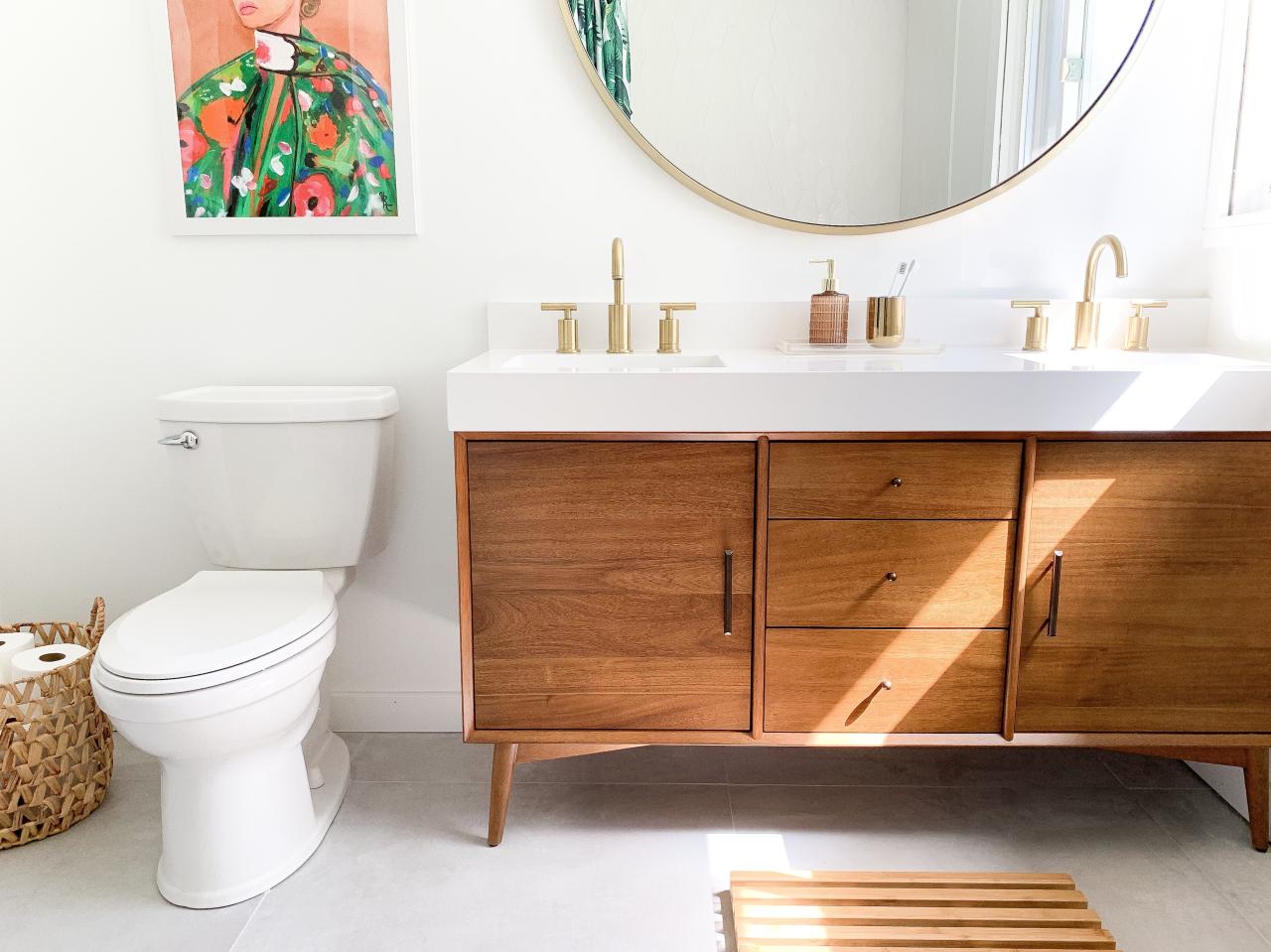
Mid-century bathroom vanities often feature distinct sink styles that contribute to the overall aesthetic. These sinks vary in design, installation method, and impact on the vanity’s functionality and visual appeal. Understanding the differences between these styles is crucial for creating a cohesive and stylish mid-century bathroom.
There are three main types of sink styles commonly found in mid-century bathrooms: undermount, drop-in, and vessel sinks. Each type offers unique advantages and considerations.
Undermount Sinks
Undermount sinks are installed beneath the countertop, creating a seamless and sleek appearance. The sink’s rim is hidden under the countertop, giving the illusion of a larger vanity surface. Undermount sinks are known for their modern and minimalist aesthetic and are often used in contemporary mid-century bathrooms.
Advantages:
- Sleek and modern appearance
- Easy to clean due to the lack of a rim
- Provides a larger usable countertop surface
Considerations:
- More complex installation process
- May require a thicker countertop for support
- Can be more expensive than other sink types
Drop-In Sinks
Drop-in sinks are installed by placing them into a pre-cut hole in the countertop. The sink’s rim rests on the countertop, creating a more traditional look. Drop-in sinks are available in various shapes and sizes and can accommodate different vanity styles.
Advantages:
- Easy to install
- Versatile and available in a wide range of styles
- Less expensive than undermount sinks
Considerations:
- Can be more difficult to clean around the rim
- May not be as modern or sleek as undermount sinks
- Can take up more countertop space
Vessel Sinks
Vessel sinks are freestanding sinks that sit on top of the countertop. They are typically made of glass, ceramic, or stone and can add a touch of elegance and sophistication to a mid-century bathroom. Vessel sinks are often paired with minimalist vanities to create a striking visual contrast.
Advantages:
- Unique and eye-catching design
- Can add a touch of luxury to a bathroom
- Available in various materials and finishes
Considerations:
- Can be more expensive than other sink types
- Require a larger countertop surface
- May be more difficult to clean due to the exposed rim
The choice of sink style ultimately depends on the desired aesthetic, functionality, and budget. Undermount sinks offer a modern and sleek look, while drop-in sinks provide versatility and ease of installation. Vessel sinks add a touch of elegance and sophistication to a bathroom.
By understanding the differences between these sink styles, you can make an informed decision that complements the overall design of your mid-century bathroom.
Faucetry
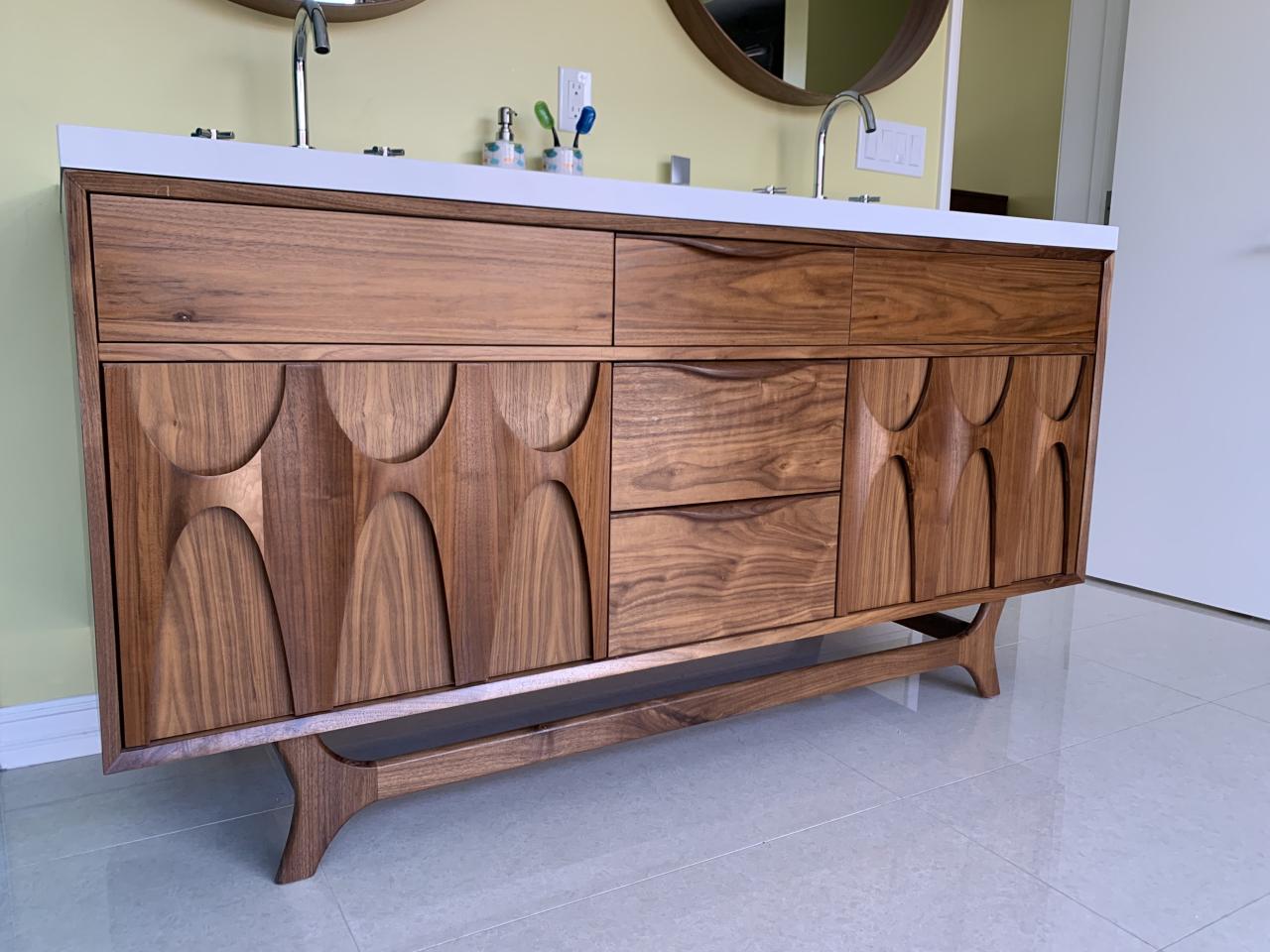
Faucets play a significant role in completing the mid-century bathroom vanity aesthetic. The right faucet style can enhance the overall design, while the wrong choice can detract from it. When choosing a faucet for a mid-century bathroom vanity, there are several factors to consider, including style, function, and finish.
Mid-century bathroom vanities often feature clean lines and geometric shapes. To complement this style, choose a faucet with a similar aesthetic. Single-handle faucets are a popular choice for mid-century bathrooms, as they are both stylish and functional. Two-handle faucets can also work well, but they should have a simple, streamlined design.
Wall-mounted faucets are another great option for mid-century bathrooms. They create a clean, uncluttered look and can help to make the bathroom feel more spacious. When choosing a wall-mounted faucet, be sure to select one that is the appropriate height for your vanity.
The finish of your faucet should also complement the style of your vanity. Brushed nickel and chrome are popular choices for mid-century bathrooms, as they have a clean, modern look. However, you can also choose a faucet with a different finish, such as brass or copper, to add a touch of warmth to the space.
Lighting
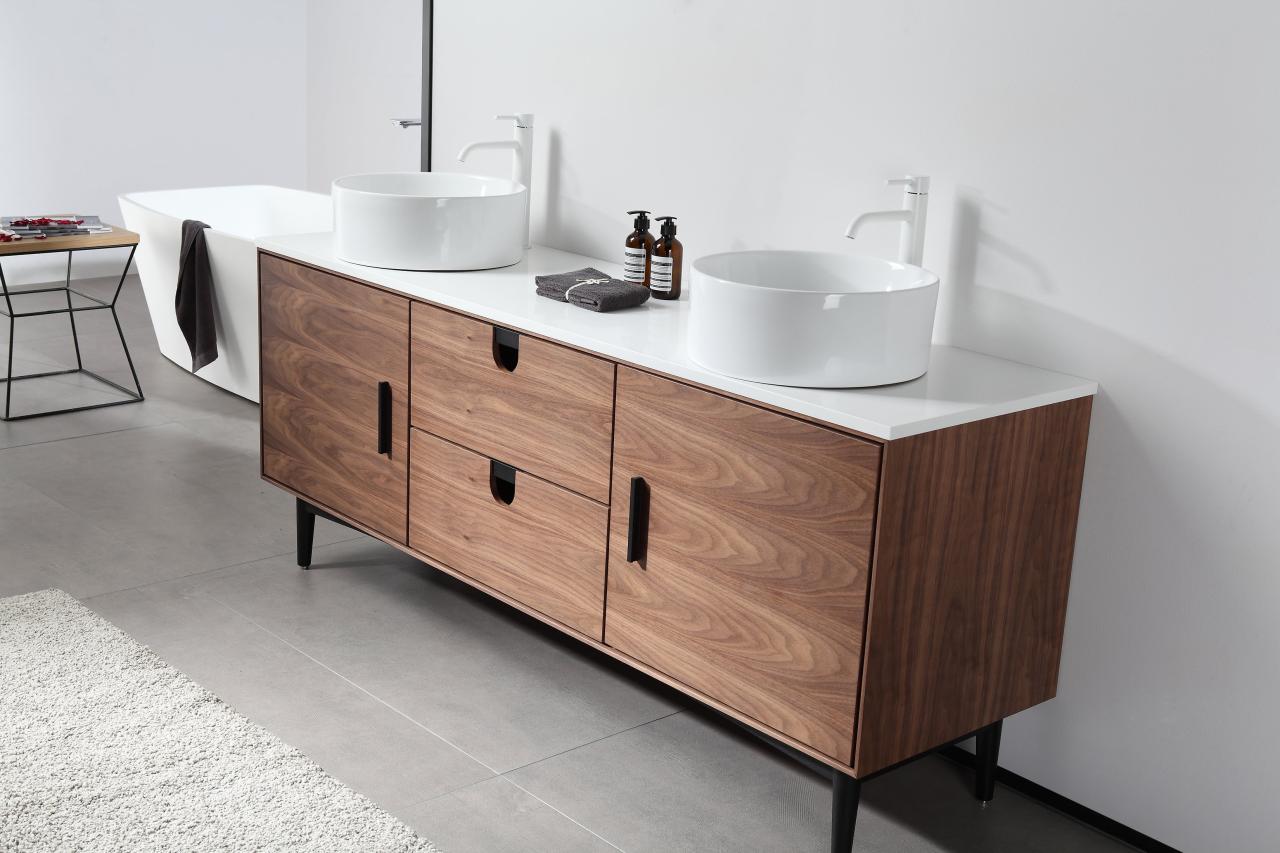
Lighting plays a pivotal role in shaping the ambiance and functionality of a mid-century bathroom. It not only illuminates the space but also sets the tone for the overall design aesthetic.
Natural light is a highly sought-after element in mid-century bathroom design. Large windows and skylights allow ample sunlight to flood the space, creating a bright and airy atmosphere. Overhead lighting is also essential, providing general illumination for the entire bathroom.
Recessed lighting, pendant lights, or chandeliers can be used to create a diffused and even light distribution.
Accent Lighting
Accent lighting is a powerful tool for highlighting specific areas or creating a focal point in the bathroom. Wall-mounted sconces or recessed spotlights can be used to illuminate mirrors, vanities, or artwork. These lights not only provide additional illumination but also add a touch of drama and sophistication to the space.
By carefully combining natural light, overhead lighting, and accent lighting, you can create a well-lit and inviting bathroom space that meets both functional and aesthetic needs.
Accessories
Accessories play a crucial role in completing the mid-century modern bathroom vanity look. They add functionality, style, and a touch of personality to the space. When selecting accessories, consider the overall design scheme and choose pieces that complement the vanity’s lines and finishes.
Mirrors are an essential accessory for any bathroom. In a mid-century modern bathroom, opt for a mirror with a clean, geometric shape, such as a round or rectangular mirror with a thin frame. Towel racks and soap dispensers should also be chosen with an eye for simplicity and functionality.
Look for pieces with clean lines and a polished finish.
Mirrors
Mirrors are an important part of any bathroom, and they can also be a great way to add style to your mid-century modern bathroom. When choosing a mirror for your vanity, consider the following:
- The size of the mirror: The mirror should be large enough to be functional, but it should not overwhelm the vanity.
- The shape of the mirror: Round and rectangular mirrors are both popular choices for mid-century modern bathrooms.
- The frame of the mirror: The frame of the mirror can be made of a variety of materials, including wood, metal, or plastic. Choose a frame that complements the style of your vanity.
Towel Racks
Towel racks are another essential bathroom accessory. When choosing a towel rack for your mid-century modern bathroom, consider the following:
- The size of the towel rack: The towel rack should be large enough to hold all of your towels, but it should not be too large for the space.
- The style of the towel rack: Towel racks come in a variety of styles, from simple to ornate. Choose a towel rack that complements the style of your vanity.
- The material of the towel rack: Towel racks can be made of a variety of materials, including metal, wood, or plastic. Choose a material that is durable and easy to clean.
Soap Dispensers
Soap dispensers are a convenient way to keep your soap organized and within reach. When choosing a soap dispenser for your mid-century modern bathroom, consider the following:
- The size of the soap dispenser: The soap dispenser should be large enough to hold a reasonable amount of soap, but it should not be too large for the space.
- The style of the soap dispenser: Soap dispensers come in a variety of styles, from simple to ornate. Choose a soap dispenser that complements the style of your vanity.
- The material of the soap dispenser: Soap dispensers can be made of a variety of materials, including metal, glass, or plastic. Choose a material that is durable and easy to clean.
Renovation Considerations
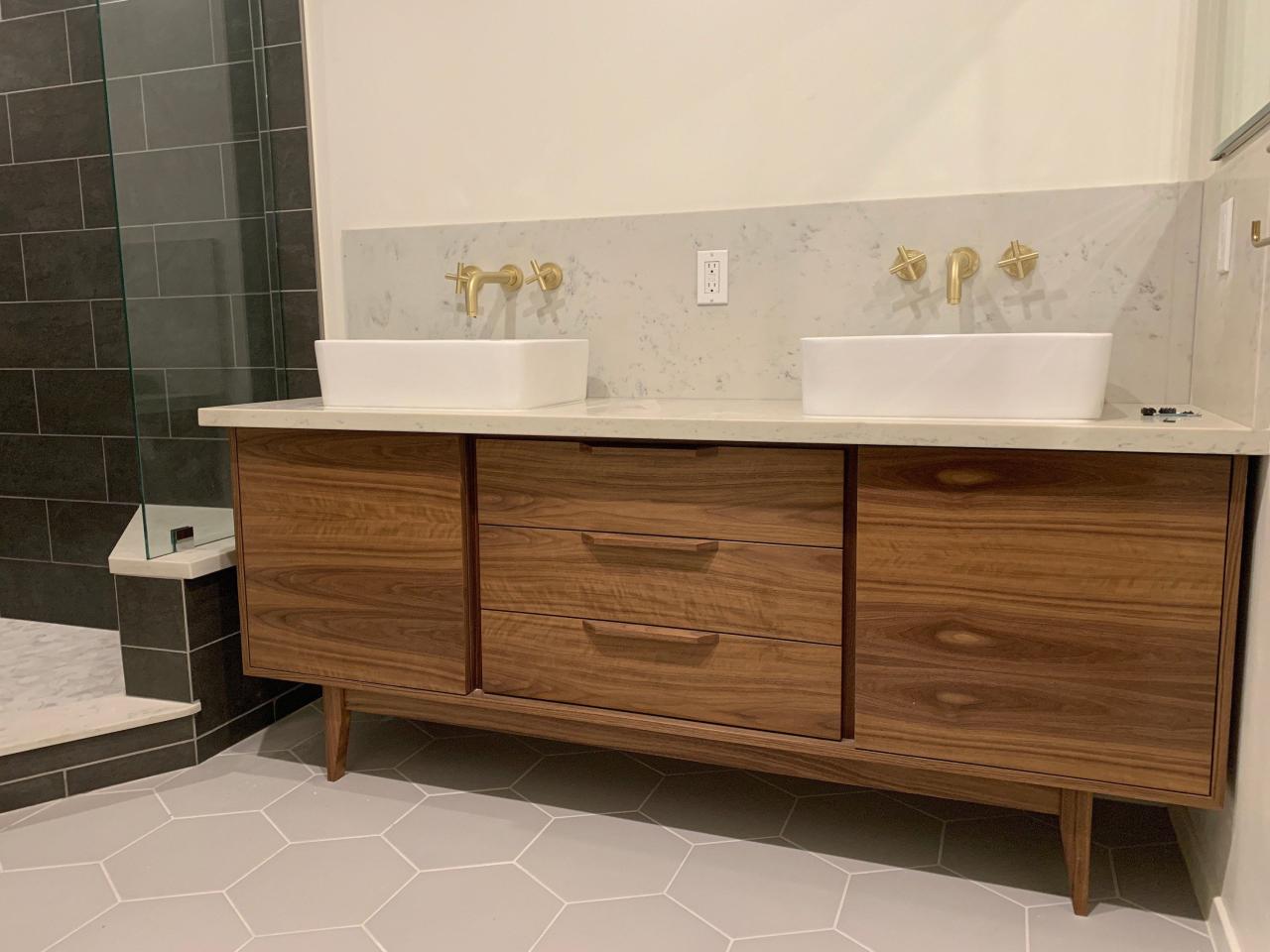
Renovating a bathroom with mid-century vanities presents unique challenges and considerations. It’s crucial to preserve the original character while updating fixtures and finishes to meet modern needs.
Preserving original features like cabinetry, hardware, and decorative elements ensures authenticity. However, updating plumbing, lighting, and storage solutions can enhance functionality and comfort.
Integrating Mid-Century Vanities into Modern Designs
- Choose complementary colors and materials that harmonize with the vanity’s style.
- Incorporate modern fixtures like frameless mirrors, floating shelves, and geometric tiles for a contemporary touch.
- Add contrasting textures like marble countertops or wood accents to create visual interest.
Final Wrap-Up
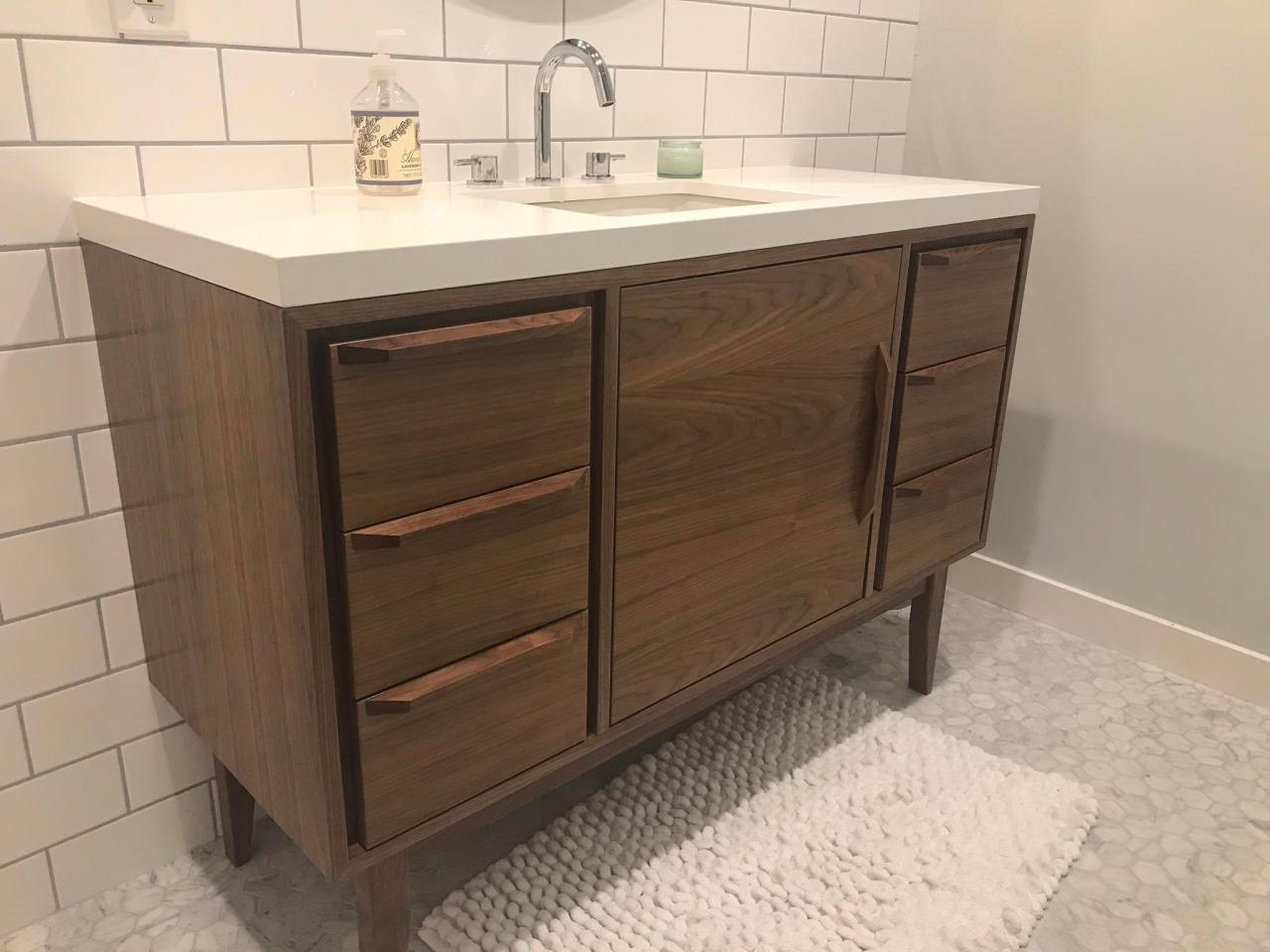
Whether you’re embarking on a bathroom renovation or simply seeking inspiration, mid century bathroom vanities offer a timeless solution that combines aesthetics with functionality. Embrace the allure of this iconic design and create a bathroom space that exudes both style and character.
